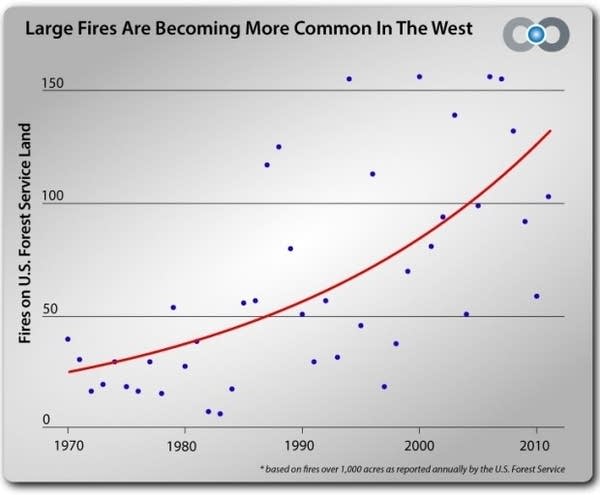Breathing easier now, weekend heat wave ahead
Blue sky. Singing birds. Gentle breezes.
The way summer was meant to be at the Weather Lab this morning.
We're breathing easier now across Minnesota, but I'm still keeping a wary eye out for any southward shift in the thickest part of the smoke plume sailing across Canada. For now most of the smoke from 600-plus wildfires in western North America drifting over Minnesota remains elevated.

The Minnesota Pollution Control Agency's air quality index remains good across most of Minnesota today. The forecast is for rising AQI levels later this week.
Create a More Connected Minnesota
MPR News is your trusted resource for the news you need. With your support, MPR News brings accessible, courageous journalism and authentic conversation to everyone - free of paywalls and barriers. Your gift makes a difference.

Here's a more detailed look at what the levels mean for us as we breathe in suspended particulate matter in the air around us.

Canadian smoke front
The thickest plumes of smoke are spinning across Canada from Hudson Bay to Lake Winnipeg. Tracking warm and cold fronts is tough enough. Now we track 'smoke fronts.'

This seems to be the new normal as western fires increase in a shifting climate. It makes perfect sense. Reduce snow pack in the Rockies. Warm the air a few degrees. Watch the invasive pests like the pine bark beetle thrive and stress trees. Even small shifts in climate make majestic boreal forest ecosystems ripe for dramatic changes as fires sweep in.

Climate Central's 2012 analysis of the increase in large western fires seems even more prescient as fires rage northward into Canada and Alaska this year.

The number of large and very large fires on Forest Service land is increasingly dramatically. Compared to the average year in the 1970’s, in the past decade there were:
7 times more fires greater than 10,000 acres each year
Nearly 5 times more fires larger than 25,000 acres each year
Twice as many fires over 1,000 acres each year, with an average of more than 100 per year from 2002 through 2011, compared with less than 50 during the 1970’s.In some states the increase in wildfires is even more dramatic. Since the 1970’s the average number of fires over 1,000 acres each year has nearly quadrupled in Arizona and Idaho, and has doubled in California, Colorado, Montana, New Mexico, Nevada, Oregon, Utah and Wyoming.
On average, wildfires burn twice as much land area each year as they did 40 years ago. In the past decade, the average annual burn area on Forest Service land in the West has exceeded 2 million acres — more than all of Yellowstone National Park.The burn season is two and a half months longer than 40 years ago.
Across the West, the first wildfires of the year are starting earlier and the last fires of the year are starting later, making typical fire years 75 days longer now than they were 40 years ago.
Weekend hot front ahead
Your AC unit is getting a rest so far in July. Temps at MSP Airport are running -4.4 degrees vs. average so far this month. That's about to change.
An increasing southerly wind flow around the back side of departing high pressure ramps up humidity starting late tomorrow.

Temps rise through the 80s the rest of the week. Dew points hit the noticeably uncomfortable 60 degree mark by tomorrow evening and rise through the 60s. By Sunday we make a run at 90 degrees with an oppressively tropical 70-degree dew point.

The longer range GFS output continues to crank out a string of days above 85 degrees, with a few more 90s in the forecast. Dog Days of late July anyone?

The Land of 10,000 Lakes is calling.